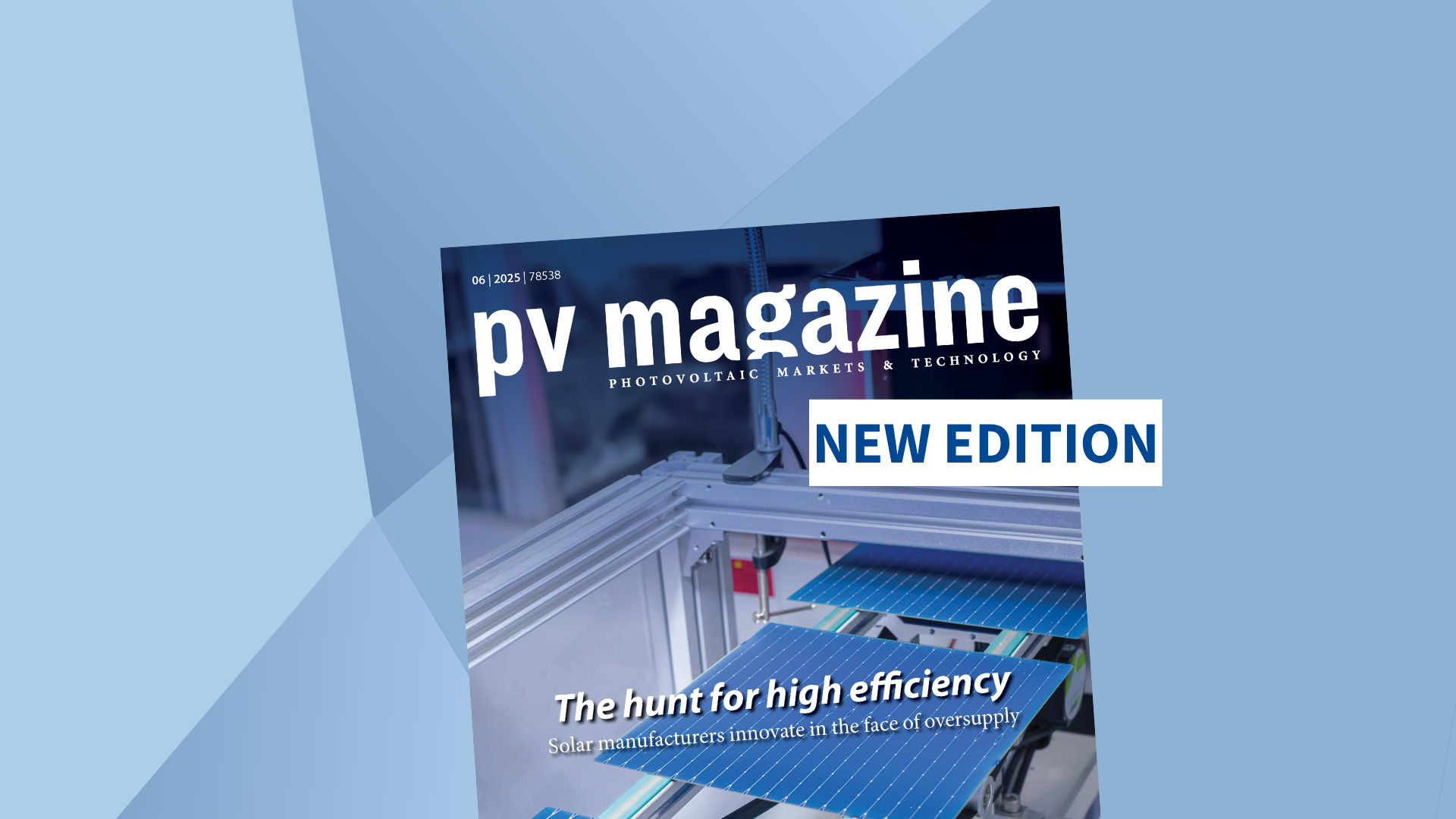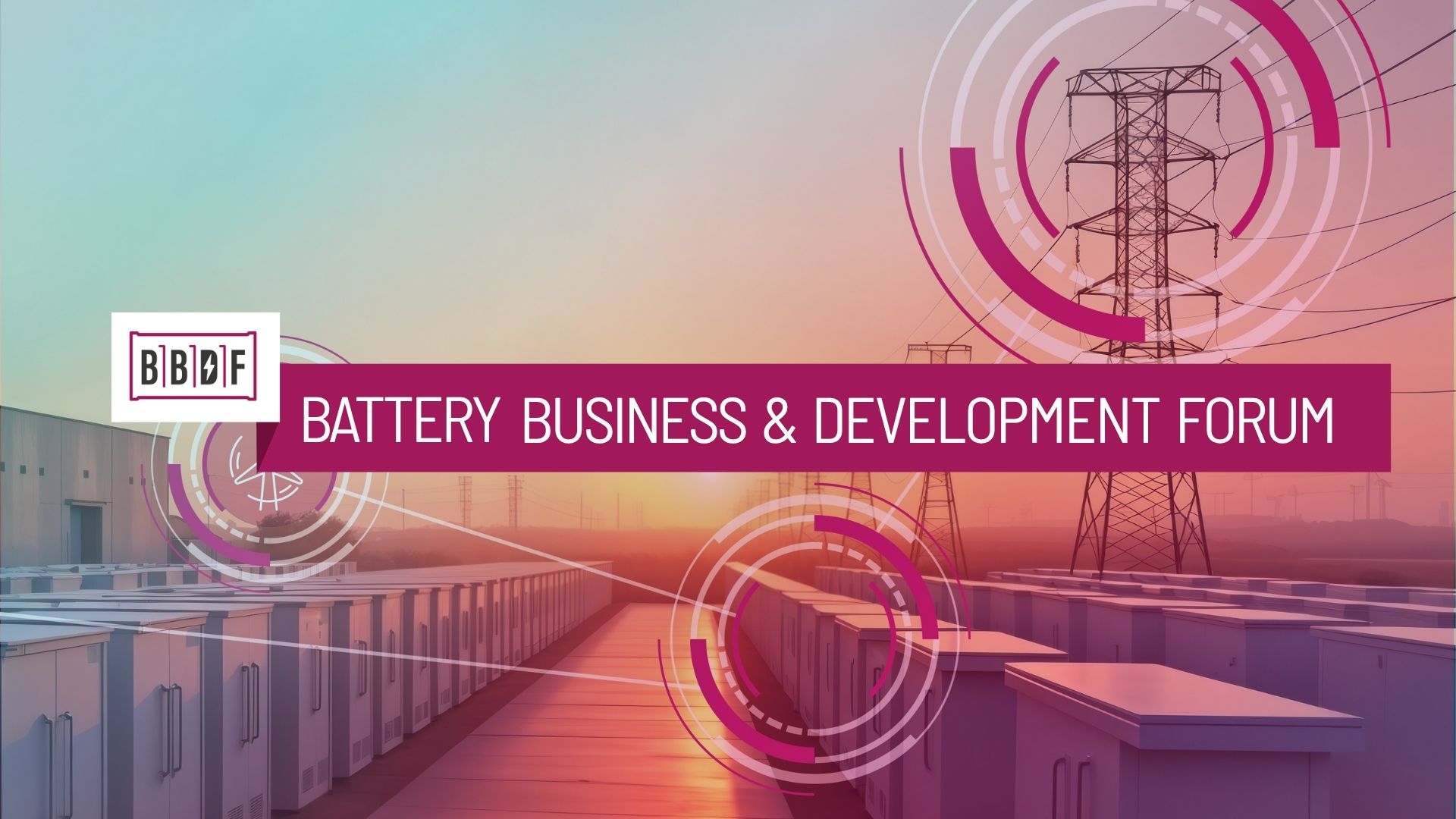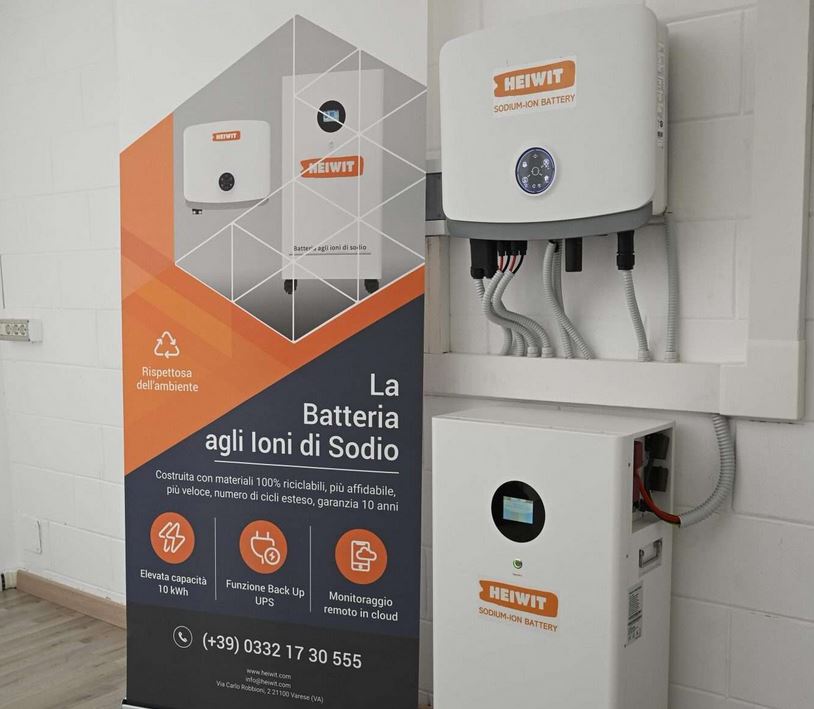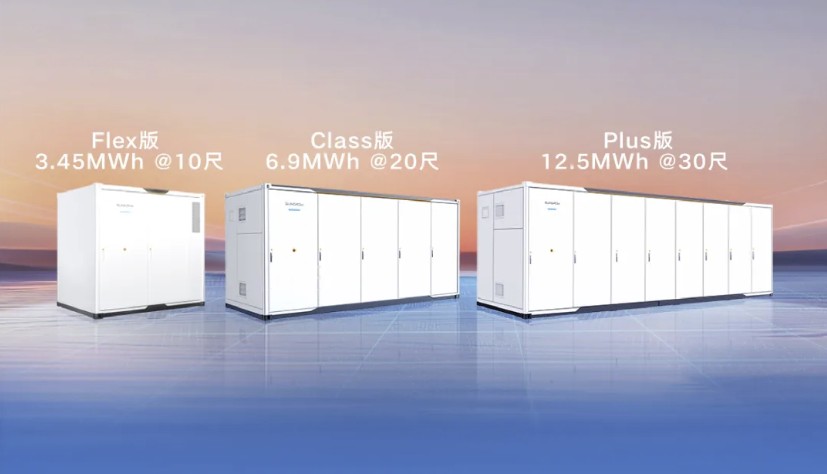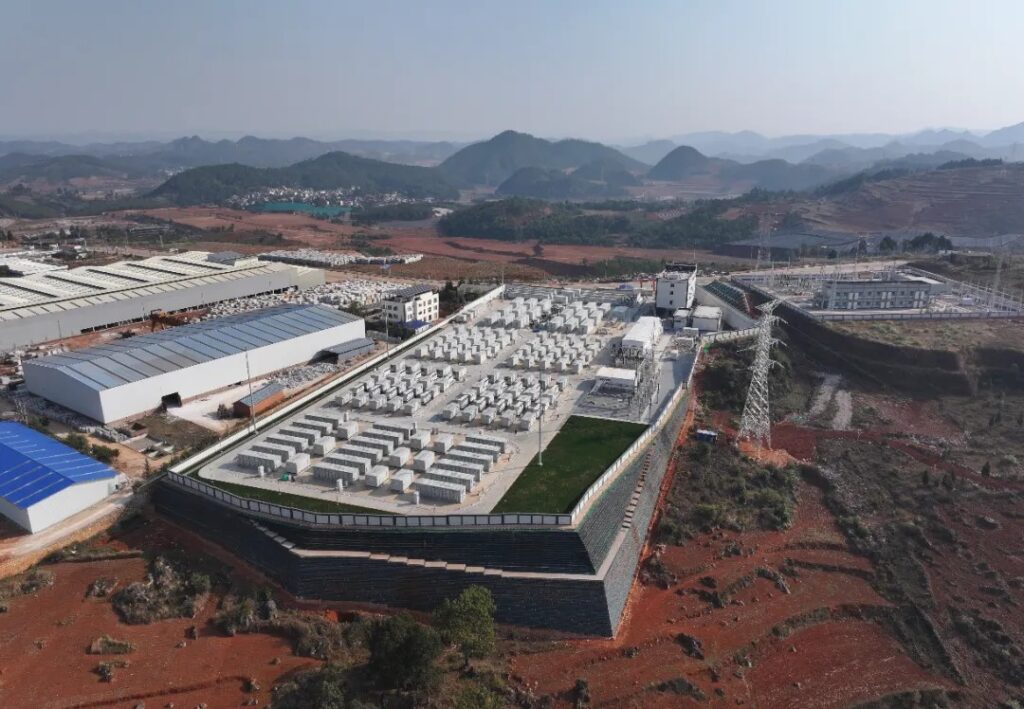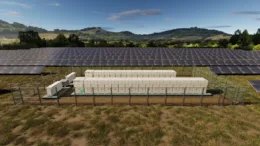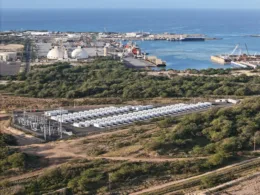Battery makers bullish about Brazilian market prospects
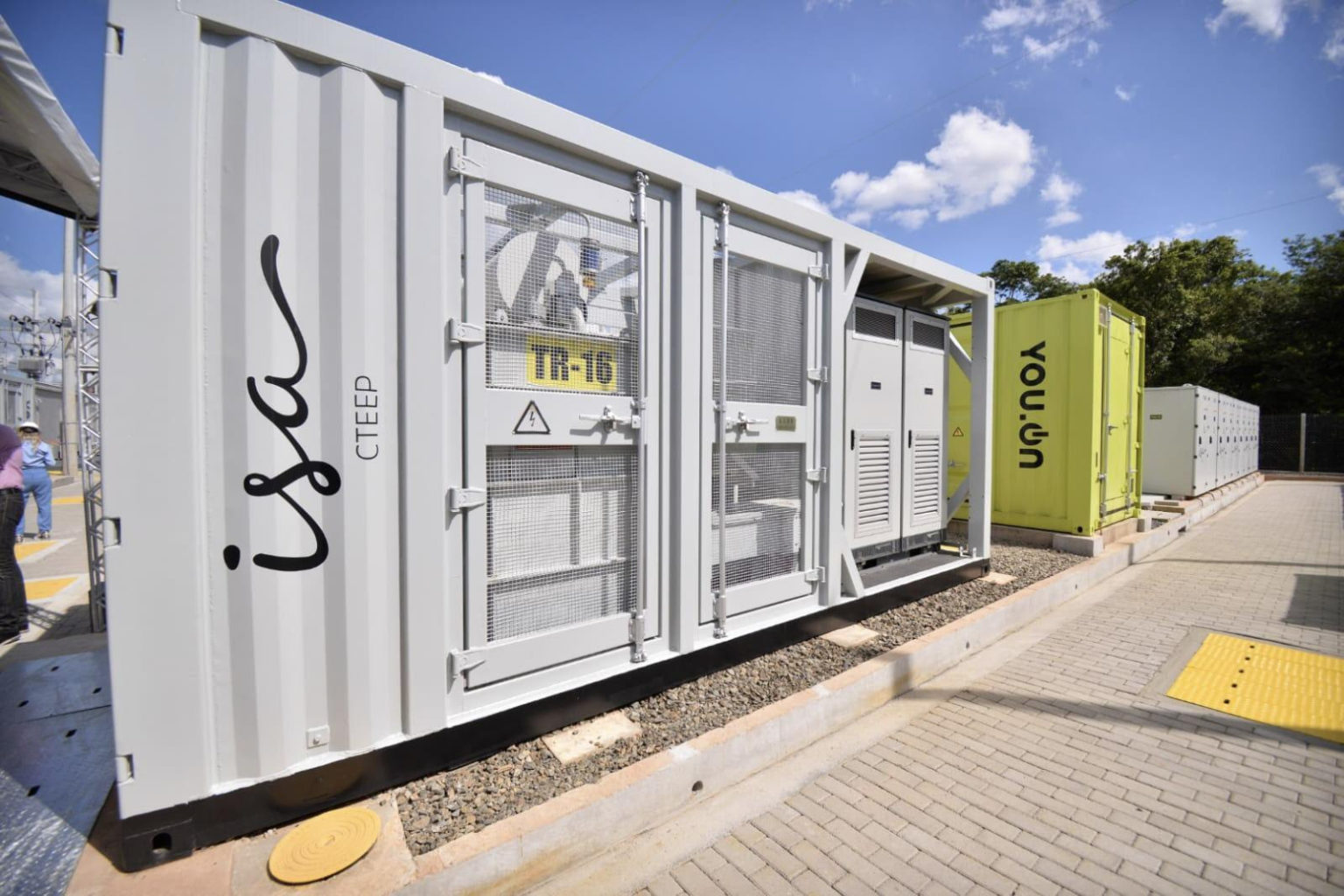
pv magazine presents a detailed overview of a Brazilian energy storage market boosted by rising electricity prices, grid congestion, and the search for greater energy autonomy.
Batteries are emerging as a key technology, even amid a lack of regulation, thanks to the rise of decentralized electricity generation and challenges to grid electricity supply.
To map this transitional point in the Brazilian market, pv magazine spoke with Chinese battery manufacturers BYD, Deye, Dyness, Fox ESS, GoodWe, Growatt, Huawei, Livoltek, and Solax Power, and Brazilian distributors and manufacturers SecPower, Powersafe, and UCB Power.
The respondents shared their commercial strategies, Brazilian production plans, regulatory stance, and growth projections as they target the Brazilian market amid investment in technology, logistics, and increasingly fierce competition.
Expanding local capacity
Among the manufacturers with a production presence in Brazil, BYD has maintained a plant in Manaus, in Amazonas state, since 2017 focused on lithium iron-phosphate (LFP) batteries for electric buses. Director, Marcello Schneider said “the factory plays a strategic role in the nationalization of the electromobility chain” and revealed plans to expand its operations into producing stationary energy storage systems. “We are evaluating ways to expand our operations, whether with new products, partnerships, or even future phases of national production,” he added.
SecPower, which has been in the market for almost three decades, could double its 336 MWH-per-year production capacity. Chief Executive Gabriella Reigada said, “We are expanding our manufacturing capacity. The growth in demand has been notable since last year.”


Powersafe, which announced its entry into the renewable energy market in 2024, is present in Minas Gerais, Goiás, and São Paulo. It is betting on renewable energy and wants clean power to supply 20% of revenue by next year, according to Operations Manager André Ribeiro.
UCB Power also invests in Brazilian production of more than 72,000 lithium energy storage batteries per year plus more than 2 million lead-acid batteries and other lines dedicated to powering cell phones and laptop notebooks. The company’s product engineering manager, Roberto De Luca, pointed out “batteries are the driving force behind the energy transition and will be responsible for the energy security of the national system through the greater availability of renewable energy resources.”


Chinese manufacturers such as Deye, Growatt, Huawei, Livoltek, SolaX Power, and Sungrow do not have Brazilian production but are carrying out studies and developing strategies to meet growing demand in the country.
Iberê Carneiro, an engineer at Livoltek, says the company is starting studies to transfer part of production to a Manaus factory by next year. Deye plans to start local production this year, according to Operations Director Caio Lentini. “Growth has been accelerated and the market tends to adopt systems with batteries, instead of traditional on-grid systems,” he said.


Regulation, tariffs, climate
Regulation such as Inmetro Ordinance 140/2022, which applies to solar energy generation and storage, is driving energy storage adoption, together with rising electricity prices and extreme weather events.
“Recurrent blackouts in Brazil are causing people to seek reliable solutions to avoid the impacts of constant interruptions in supply,” said SolaX manager Dieny Melo. “In this sense, batteries are a solution to this problem, ensuring energy security and independence for Brazilians.”
Robson Meira, country manager at Fox ESS Brazil, noted energy storage demand is expected to double by next year, especially for solar-plus-storage hybrid and off-grid systems. “We have seen significant growth in demand for [energy] storage solutions,” said Meira.
Thiago Guimarães, GoodWe’s sales director, emphasized his company’s focus on agribusiness and commercial energy storage clients. “We believe the market will grow significantly from now on,” he said. “We have launched solutions with backup parallelism and instantaneous power of up to 1 MW.”



For Silvio Robusti, product manager at Growatt, “there is an increase in the understanding of the benefits that storage can offer, such as backup [power], optimization of [electricity] self-consumption, and response to higher [electricity loads] at specific times”.
BYD’s Schneider reinforced that positive outlook, stating, “The demand for stationary [energy] storage solutions is expanding, driven by distributed [electricity] generation, backup [power] needs, and the search for energy efficiency.”
Dyness Country Manager Carlos Trotta regards 2024 as a “seed year” for the market and projects exponential growth through 2030.


Lithium-ion
The widespread adoption of lithium iron-phosphate (LFP) battery technology highlights Brazil’s preference for safer, more durable energy storage solutions with good thermal performance, especially for solar energy-linked and e-mobility applications. BYD’s Schneider said the company works exclusively with lithium-ion devices, using its Blade Battery in light vehicles and robust lithium iron-phosphate (LFP) versions for heavy vehicles and stationary energy storage systems. “Our vertical [manufacturing] model ensures full control of the [supply] chain, from raw materials to the final system,” he said.
Meira, from FoxESS, said, “We control the entire chain, from mineral extraction to the final product, which guarantees traceability and reliability.”
Huawei Chief Technology Officer (CTO) Roberto Valer emphasized the company’s technical rigor in choosing cell suppliers, compensating for the fact Huawei does not directly manufacture that component. “We conduct more than 100 technical tests to ensure the quality of the cells integrated into our systems,” said Valer.
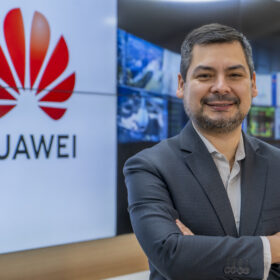
Image: Huawei
Even companies that do not produce cells invest heavily in critical battery system stages such as the development of management and integration systems, as is the case with Guimarães, from Goodwe, who cited a broad line of products with modular lithium iron-phosphate (LFP) technology.
At Dyness, Trotta highlighted advanced safety features such as an aerosol-based fire suppression system and an intelligent battery management system (BMS) that balances the charge of cells.
Lentini, from Deye, summarized his company’s model by saying the BMS and cabinet are manufactured in-house, using cells from tier 1 players.
That hybrid supply chain structure, with partial or total control of input components and materials, is also followed by companies such as Growatt, SolaX, Livoltek, and UCB Power, the latter positioning itself as the first national manufacturer of lithium iron-phosphate (LFP) batteries.
Supply chain links
The BESS supply chain is extensive and still consolidating in Brazil. It involves everything from the extraction of critical minerals to recycling of devices. Schneider, from BYD, summarized the main links as cell production, system assembly, integration with inverters, energy management system development, installation, and operation. He pointed out the links most present in Brazil today are still concentrated in the final stages, such as commercialization and integration of BESS, and said he sees room for progress, especially in the reuse and recycling of batteries. Those parts of the chain will “tend to strengthen in the coming years,” said Schneider.
Companies that operate with greater vertical integration highlight the quality and traceability advantages such an approach offers. Meira, from FoxESS, said the company dominates the supply chain, from mining to installation, with strategic support from groups such as battery manufacturer REPT Battero and steelmaker Tsingshan. Trotta, from Dyness, cited seven essential supply chain links: materials extraction, component production, cell assembly, integration, marketing, battery use, and recycling. For him, “the role of distributors and installers will be fundamental in this transition but constant training will be essential to mature the sector.”
Other manufacturers detailed their operations in specific parts of the BESS supply chain. Lentini, from Deye, listed cell manufacture, BMS development, cabinet production, assembly, distribution, and end customer relationships. Guimarães, from Goodwe, talked about a hybrid supply chain model which goes from purchasing cells to working with end-customers, with support from battery integrators and partners for special projects. Valer, from Huawei, emphasized his company’s offer of complete battery systems comprising modules, containers, substations, and power control systems, optimizing commissioning. Ribeiro, from Powersafe, highlighted the company has an environmental program to manage waste throughout the production chain. Companies such as SecPower, SolaX, Livoltek, and UCB Power emphasized the importance of local engineering, technical support, intelligent battery integration, and sustainability as competitive advantages.
BESS-as-a-service
Diversification of battery applications and the advancement of the leased, BESS-as-a-service business model have driven manufacturers to adapt their Brazilian portfolios to include modular, scalable solutions geared toward different electricity consumption profiles. To serve everything from homes to industrial projects and power plants, companies such as Deye, FoxESS, Growatt, and Dyness have expanded their offering with lithium-iron-phosphate (LFP) batteries configured for low- or high-voltage and with different expansion capacities. Lentini, from Deye, explained modularity is strategic: “We have batteries [offering] from 2 kWh to 5 MWh [of energy storage] … and we already operate in Brazil with the battery-as-a-service model, in Pará.”
Integrated BESS systems are gaining prominence for industrial clients. Meira, from FoxESS, mentioned its GMAX product, which is already in operation in an ice cream factory and in fast-charging stations for vehicles. Huawei, in turn, has partnered with Brazilian installer Matrix Energia to offer energy storage projects without direct sales to end-customers. “The customer benefits from operational and economic gains without the need to purchase the system,” said Huawei’s Valer. Schneider, from BYD, also highlighted investment in partnerships with BESS integrators, offering cost predictability and performance as differentiators.
Among Brazil’s battery companies, Powersafe is accelerating its entry into the market alongside a strategic partner and already has a battery project-specific credit line with Brazil’s BV bank. “We are positioning ourselves as the first manufacturer in Brazil with this financing structure for [energy] storage,” said operational manager Ribeiro. SecPower is preparing to launch the BESS-as-a-service model with a focus on battery accessibility and compatibility with legacy systems. More than selling batteries, manufacturers want to offer energy as a service, shaping the market according to new demands.
Market drivers
The search for energy security and electricity bill savings, amid grid instability, is a main driver for BESS demand. “Today, [energy] storage represents a direct response to the limitations of [electricity] distribution networks, the increase in the cost of diesel, and the vulnerability of critical systems such as hospitals, data centers, and industries”, said Sungrow Director Rafael Ribeiro. Robusti, from Growatt, pointed out “energy autonomy and mitigation of [electricity] tariffs during peak hours are major motivators but there are still technical bottlenecks, especially in training [BESS] integrators prepared to scale and operate these systems.”
From a regulatory standpoint, BYD’s Schneider said, “The modernization of the regulatory framework has driven grid-connected applications such as [grid-strengthening] ancillary systems, [electricity] demand response, and [grid] capacity reserve.” De Luca, from UCB Power, also highlighted a drop in lithium prices.
In the corporate energy storage market, battery applications such as peak grid demand shaving, load shifting, and intelligent backup power systems have been the main focus. “Companies are looking to avoid technical restrictions, increase production, and keep critical systems running without depending on the grid”, said SecPower’s Reigada. For Guimarães, from Goodwe, energy reliability is the strongest driver. “Consumers want guaranteed supply, even more than savings,” he said. Meira, from FoxESS, warned, “Regulatory changes that affect credit compensation [for excess self-generated electricity injected into the grid] and electrical insecurity are making batteries not just an option but a necessity for many”.
The industry expected a first national auction of battery capacity reserve, scheduled this year, plus other initiatives by the Ministry of Mines and Energy (MME), the National Electric Energy Agency (Aneel), and the Energy Research Company (EPE) would consolidate batteries as a strategic piece of national energy planning. Changes at the head of ANEEL and the MME have sowed doubt, however.
The term of office of ANEEL director Ricardo Tili, who reported on energy storage regulatory progress, recently ended and his work has not yet been divided among the other directors, although Daniel Danna will analyze the results on a public consultation exercise held to generate input for the proposed regulation. On Friday, Brazil’s national secretary for energy transition and planning, Thiago Barral, was instead appointed to oversee the energy demands of the COP30 climate change summit to be held in Belém in November. He was replaced in the former role by Gustavo Cerqueira Ataíde, chief of staff of the EPE presidency.
Electricity opportunities
BYD’s Schneider said batteries will play a strategic role in a scenario of “accelerated expansion of solar and wind generation,” contributing to energy system reliability and enabling more flexible grid choices, like those on the nations free electricity market which enable users to choose energy their energy supplier.
Valer, from Huawei, also highlights highlighted the relevance of batteries for grid “frequency regulation, voltage control, and support for high penetration of renewables,” with a focus on microgrid projects and the grid capacity reserve auction. Reigada, from SecPower, cited the growing use of batteries with up to 6 MWh of capacity in off-grid networks and for R&D, avoiding heavy grid infrastructure expense.
Off-grid industrial energy users, agribusiness, and electricity consumers for whom uninterrupted supply is “mission-critical,” are also driving battery demand. “Hospitals, data centers, milk production, irrigation: they all need stable and continuous energy,” said Guimarães, from Goodwe. Sungrow’s Ribeiro said falling battery prices, rising diesel costs, and regulatory change will also lift the market. “Storage is increasingly viable and strategic for national energy planning,” he said.

Image: Sungrow Marketing
Clear rules, auctions needed
Regulating energy storage and holding grid capacity reserve auctions are key issues for unlocking investment in batteries. Companies operating in Brazil have sought to actively participate in policy discussion via industry bodies, public consultation, and technical forums. One example is Huawei. CTO Valer said the company contributed to the public consultation on plans for a national energy storage auction and advocates “the adoption of technical requirements that guarantee the safety and efficiency of [energy storage] systems.” He highlighted Huawei’s institutional involvement with the federal government and a recent visit by Minister of Mines and Energy Alexandre Silveira to Huawei’s headquarters in China.
Companies have engaged through membership bodies such as the Brazilian Association of Energy Storage Solutions (ABSAE), the Brazilian Association of Technical Standards (ABNT), the Brazilian Association of Photovoltaic Solar Energy, and the Brazilian Association of Distributed Generation, reinforcing the importance of sector-based representation.
“We participate through ABSAE, of which we are a member, in addition to the effective and constant participation in technical forums and in the development of standards conducted by ABNT,” said SecPower’s Reigada. Ribeiro, from Powersafe, highlighted the presence of the company’s team at the ABSAE Global Summit event, which brought together representatives from Brazil and countries such as the United Kingdom, Chile, and Australia. “We are aligned with good practices and the execution of the [grid] capacity reserve auction,” he said.
Even companies not yet directly involved in the discussions recognize the importance of doing so. Trotta, from Dyness, said the company is monitoring the situation and intends to get involved soon, highlighting the role of ABSAE as essential to getting the planned energy storage and grid capacity reserve auctions off the ground. Schneider, from BYD, agreed, stating, “We believe that a clear and stable regulatory framework is essential to ensure legal certainty and accelerate the adoption of large-scale [energy] storage.”
Demands
Regulating battery use is unanimously seen by companies as critical to unlocking investment and expanding the role of energy storage in the energy transition. Schneider, from BYD, argued batteries should be recognized as multi-functional assets providing services for electricity generation and consumption as well as supporting the grid. He pointed out the need to ensure predictability and enable technological competition in auctions. For Huawei’s Valer the inclusion of advanced functionality in regulation, such as grid-forming technology, is urgent. He said, “It is already a reality in mature markets and can prevent blackouts, offer synthetic inertia [which secures time to bring alternative power sources online], and support [grid] system stability.”
From a tax perspective, several executives warned of obstacles that could compromise the competitiveness of batteries. Robusti, from Growatt, said “the high tax burden on imported equipment creates insecurity and limits business models.” SecPower’s Reigada said batteries face “a higher tax burden than other clean [energy] sources, which discourages investment.” The return of a tariff-exception regime for batteries, advocated by Melo, of SolaX Power, is also seen as crucial to expanding access to the technology.
Economic viability also depends on adequate remuneration for the various services that batteries can provide. Oliveira, from Livoltek, highlighted the importance of recognizing grid ancillary services while Ribeiro, from Sungrow, said, “It is essential to remunerate functions such as frequency control, load shedding, and rapid response.”
Lentini, from Deye, said, “The challenge is regulation. We already have solutions, we need government support to scale the sector.”
From pv magazine Brasil.

